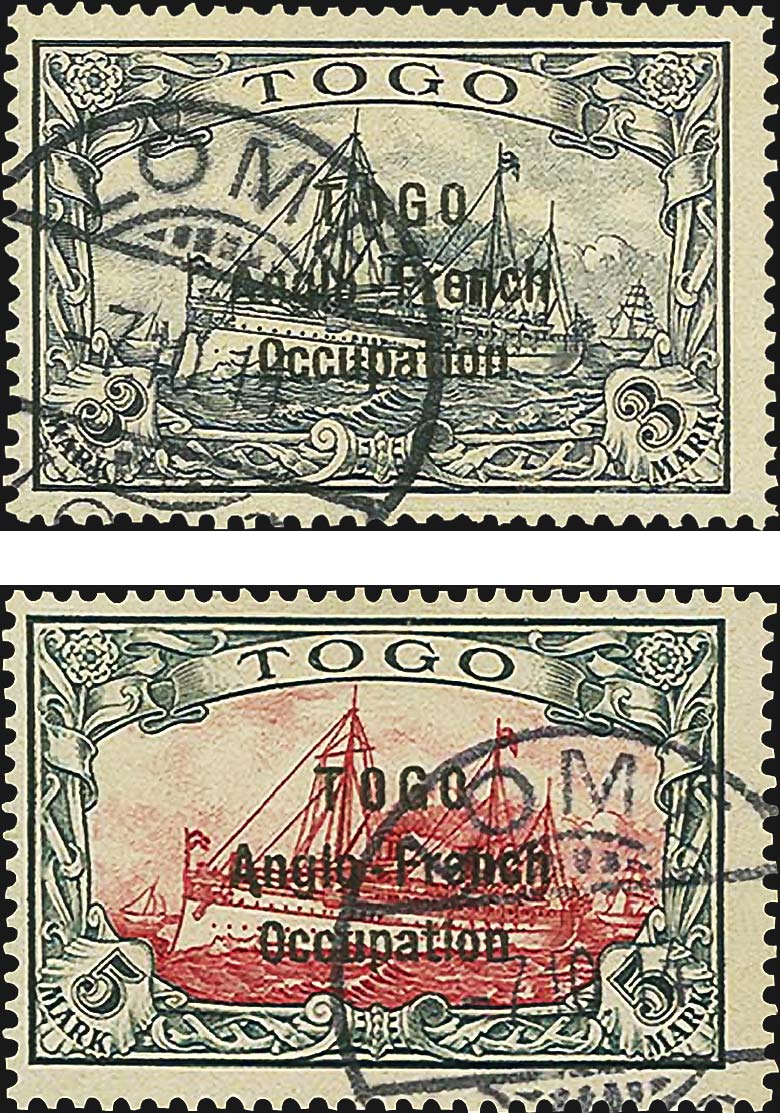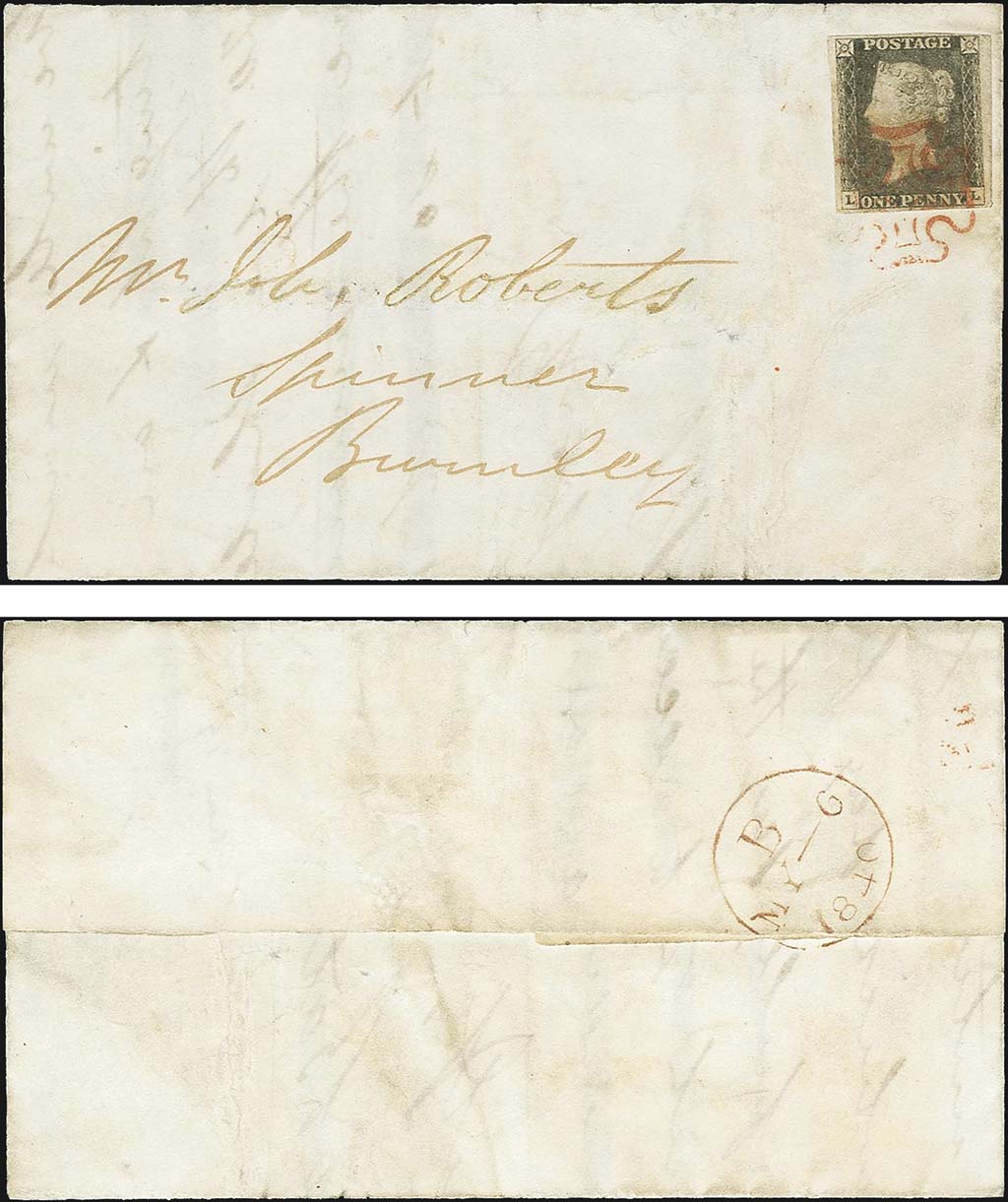Auctions
Penny Black FDC sells for $32,000
The world’s first postage stamp, Great Britain’s Penny Black, celebrated its 175th birthday in May with a big international stamp show in London.
In conjunction with the show, known as the Europhilex Stamp Exhibition London 2015, the firm of Heinrich Kohler (together with Corinphila, H.R. Harmer and John Bull) conducted an auction of worldwide rarities on May 16.
The firm’s web site has online and downloadable catalogs and full results.
Appropriately enough for the event, one of the lots was a first-day cover of the Penny Black, mailed on May 6, 1840, the inaugural date on which adhesive stamps could be used in Great Britain to show prepayment of postage.
The innovation of that little black-and-white label, with its portrait of a young Queen Victoria and the simple inscription “Postage/One Penny,” was the keystone of broad postal reforms introduced in Britain in 1839 by Rowland Hill. These would have far-reaching benefits for social and economic development throughout the Victorian era and into the 20th century, not just in Britain but around the globe.
The cover in the Europhilex sale, bearing a Penny Black neatly tied by a red Maltese-cross cancellation, was actually a folded letter, sent from London to Burnley, a market town in Lancashire, in the north of England. Envelopes were not yet in widespread use in the 1840s, so letters were typically folded up and sealed with the address written on the outside.
The Penny Black on this cover is from the early state of the first printing plate. A total of 11 plates ultimately were made, with the first plate later being refurbished to prolong its use. The stamp has the check letters “LL” in the lower corners, indicating that it was the twelfth stamp in the twelfth row of the sheet.
The British post office put these corner letters on most of their early stamps as a way to deter forgery, although in the end there was little evidence that this practice was effective, and it was dropped in the 1880s.
The vital feature making the cover valuable is a neat, slightly oxidized datestamp on the back of the piece, reading “B/MY–6/1840” (“B” was a clerical code and “MY” the standard two-letter abbreviation for May). Expert certificates differed on whether the datestamp had been enhanced, but the date is corroborated inside the letter.
Although portions of the letter as well as the original address were erased sometime in the past, presumably to protect someone’s privacy, the dateline remains original and clearly reads “London May 6th. 1840.” Postage stamps had gone on sale May 1, but the first day they were to be used was May 6.
The erased address had been rewritten at some point, to make the cover more aesthetically pleasing. Likewise, a small fault to the stamp was repaired and the cover and stamp generally cleaned up.
Such improvements to an item of postal history, though generally frowned upon, can be acceptable in the case of great rarities as long as the modifications are disclosed whenever the item is sold or exhibited.
The cover was hammered down for €24,000, or about $32,000, including the 20 percent buyer’s premium applied to all lots in the sale.
Among other classics in the sale, an unused trio of New Zealand rarities stood out for their classic beauty, demonstrating just how rapidly and completely the Victorian postage stamp conquered the world.
Printed in 1855 in London by Perkins Bacon, the same firm that produced the Penny Black, New Zealand’s first issue appeared in three denominations: 1 penny dull carmine, 2d deep blue and 1 shilling yellow green, matching the colors of British stamps in use at that time.
The designs each show the famous three-quarter-face Chalon portrait of Queen Victoria, surrounded by a machine-turned background security pattern. Alfred Edward Chalon (1780-1860) was a Swiss artist who became Victoria’s official watercolorist.
Production of New Zealand stamps was soon transferred to the colony, with the Chalon design appearing over the next 18 years in a range of denominations, shades, paper types and perforations. Nearly all the Chalon issues are scarce, but the initial London printings are the rarest.
The three New Zealand stamps (Scott 1-3) in the Europhilex sale sold for $50,700, $33,300 and $33,300, respectively.
Seldom-seen rarities from the World War I occupation of the West African colony of Togo provided the highest realizations of the sale.
Germany established the Togoland protectorate in 1884, using German stamps until a specific issue for Togo was provided in 1897.
In August 1914, upon the outbreak of World War I, French and British forces from the neighboring colonies of Dahomey and Gold Coast invaded and seized what had been Germany’s model self-supporting colony in Africa, dividing it into two zones of administration.
For the British half, stamps of the German colony were overprinted at the Catholic mission in Lome with the words “TOGO/Anglo-French/Occupation” in a variety of settings. Some of these provisional stamps are scarce: the overprints on the 3-mark and 5m Kaiser’s Yacht The Hohenzollern stamps (Togo Scott 59-60) are particularly rare.
An example of each of the latter in the Europhilex sale, canceled by neat Lome datestamps and expertized numerous times over the years, sold for $153,500 and $160,100, respectively.
The British part of Togo would later be incorporated into Ghana, while the French part became independent in 1960 as the Republique Togolaise.
Classic stamps of many nations outside the British Commonwealth also were offered at the Europhilex sale, including a scarce Romania issue.
An unused 54-parale “Bull’s Head” stamp of 1858 (Romania Scott 2), issued for the principality of Moldavia before it united with Wallachia to form the new country, was said to be one of just 25 unused examples surviving. Favored with three huge margins, it sold for $32,000.
An unused 81pa stamp of the same design (Scott 4), without the major faults that plague about half the 35 known examples, sold for $48,000. An original-gum example of the 5pa stamp inscribed “Porto Gazetei” (Scott 5), described as “an extremely rare stamp in perfect pristine quality” with just six examples known thus, fetched $42,700.
MORE RELATED ARTICLES
Headlines
-
US Stamps
Oct 7, 2024, 3 PMMcMurtrie dismissed as APS education director following Sept. 21 arrest
-
US Stamps
Oct 7, 2024, 12 PMVasiliauskas named president of Mystic Stamp Co.
-
US Stamps
Oct 6, 2024, 5 PMApgar souvenir card available
-
US Stamps
Oct 6, 2024, 4 PMFirst Continental Congress and U.N. stamps receive Scott catalog numbers








